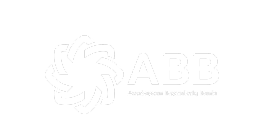
Client:eurobank
Industry:Banking and Financial Services
Region:Europe
eurobank Streamlines Operations and Boosts Productivity with RPA

20%
of daily work handled by robots in a single department
~100%
of the backlog being processed by UiPath Robots
20+
FTEs saved monthly
Client Overview
Founded in 2003 and headquartered in Poland, eurobank serves 1.4 million retail customers and has 500 branches in Poland.
Partner

In 2017, eurobank began considering robotic process automation (RPA) as an innovative solution for improving productivity and reducing costs.
By mid-2017, eurobank was piloting RPA within the company. The bank, together with implementation partner PwC, uses UiPath Orchestrator to manage numerous active Robots. From changing loan repayment schedules and know your customer (KYC) to online sales processes, eurobank has streamlined its operations, reduced process backlogs, and increased productivity.
Founded in 2003 and headquartered in Poland, eurobank serves 1.4 million retail customers and has 500 branches in Poland.
Getting started with automation
eurobank started as a small bank, but still had to follow the same regulations as the large banks in Poland. With a higher than average cost-to- income ratio, eurobank realized the need for cost optimization solutions.
At the beginning of 2017, RPA was starting to make waves at conferences and industry events. eurobank stakeholders saw the potential of RPA to transform their repetitive and rules-based processes, but needed to make sure it was the right approach. Initially, some of the bank’s representatives went to explore how RPA performed in another company, and, by the middle of 2017, decided to test RPA in eurobank.

Their RPA journey started with a tender to select an implementation partner. From the four RPA consultants who participated, eurobank selected PwC to advise on their RPA implementation. PwC suggested initiating a proof of concept (PoC) to check if the technology was suitable for the bank’s processes and systems. They began with a 4-week training for two eurobank employees, followed by the first robot development attempt. Within the next four months, the two developers built two robots and PwC created three.
For the PoC, the bank focused on two transactional areas: asset sales and collections. Each process was researched and documented, noting information such as the number of employees involved, the process steps, and the transaction frequency and volume. From the five selected processes, four delivered the desired outcomes.
In October 2017, the PoC analysis was completed and the eurobank automation team was tasked with securing the budget for the RPA project. Once that was completed, the bank set up a center of excellence (CoE) to handle everything from process selection to development and maintenance, as well as marketing and communications.
At the beginning of 2018, the automation team also decided to implement UiPath Orchestrator to control, manage, and track their robotic workforce. PwC deployed Orchestrator and connected two of the Robots, while eurobank’s team added the remaining fleet.
Why UiPath
eurobank was looking for an RPA platform that was easy to use and easy to develop by anyone, even by employees without extensive coding experience. Cost-effectiveness and scalability were also important considerations. With these needs in mind, eurobank chose UiPath as the most suitable RPA solution. “PwC proposed UiPath so that we could see how it worked, what it looked like, and after testing UiPath it stood out as the best choice for us,” explained Wojciech Szremski, eurobank Process Automation (RPA) and Process Optimization (Continuous Improvement) Department Director.
UiPath Academy provided training for the entire automation team at eurobank. The RPA team also continued their learning through the questions and answers in the UiPath Community, by using the support provided by UiPath, and using the activities and components provided in UiPath Studio.
“99% of available activities are enough to develop all the Robots in our organization,” added Bartłomiej Mazurkiewicz-Bylok, eurobank RPA team leader.
Choosing the right processes for the best results
Choosing the most suitable processes for automation mainly revolved around ROI. “We are trying to implement Robots which save a minimum of 1 FTE [Fulltime equivalent],” said Szremski. Mapping the process before automation and doing a cost-benefit analysis play fundamental roles in deciding which processes to automate. Robots that don’t directly save FTEs may be developed if they bring additional value such as improved security or response time.
eurobank currently has 14 active Robots handling daily service, changing loan repayment schedules, KYC, card activation, card restriction progress, sending email responses to complaints, online sales, as well as involvement in overdraft and collecting marketing consent from the bank’s clients.
To perform daily tasks, the Robots connect to more than ten applications and systems, which include:
Two core banking systems
Other internal process-specific systems
External databases and systems
“It’s easy with Robots.”
In the after-sales department, almost 20% of daily work is now done by robots which work together with 70 employees. In processes that had a significant backlog, some with nearly two years’ worth of backlog, Robots handled the work quickly and removed the inherent compliance risks.

Online sales have also benefited from implementing RPA. Previously, a eurobank employee had to retype client information into the system and open a product for a customer. The process took up to one and a half days. Now, it only takes four hours to open a product. The change has increased efficiency and customer satisfaction.
“We’ve entered areas where we wouldn’t have entered if we didn’t have Robots, like closing online sales. With online sales, clients want to have products quickly. It used to take one, one and a half days. Now it takes four hours or less,” explained Szremski.
With UiPath Robots, scaling from 3,000 to 6,000 weekly inquiries was seamless, as opposed to hiring someone new to handle the extra burden. eurobank also credits RPA for saving 20 or more FTEs per month, equating to 27,500 hours of human effort saved in 2018.
We’ve entered areas where we wouldn’t have entered if we didn’t have Robots, like closing online sales. It used to take one, one and a half days. Now it takes four hours or less.
Wojciech Szremski • eurobank Process Automation and Process Optimization Director
As opposed to other organizations, eurobank’s employees embraced RPA right from the start. In the trenches, they were fully aware of the work that was piling up, and they were pleased to receive extra help.
“Our employees are happy because of two reasons: One, Robots ease their workload. Two, they don’t need to do the stuff that is boring anymore,” explains Szremski.
Lessons learned
While most employees embraced RPA from the start, eurobank’s automation team initially faced skepticism from the Information Technology (IT) department. The IT department had security concerns about the brand-new technology. Being able to test UiPath and analyze process automation results over time helped address security concerns and build trust. They learned all parties involved needed to be able to operate on trust and they plan to develop more technical best practices in the future.
The bank also discovered that the production environment is, in fact, different from a testing environment, especially when using different systems and data. Furthermore, when documenting processes and interviewing the subject matter experts handling them, the automation team found out that the experts didn’t always fully understand the process.
Our employees are happy because of two reasons: One, Robots ease their workload. Two, they don’t need to do the stuff that is boring anymore.
Wojciech Szremski • eurobank Process Automation and Process Optimization Director
Experts forgot about important process flows that needed to be considered. As a result, the automation team walks through each step of a process with the expert to ensure all process steps are included before analyzing process automation potential.
Managing a robotic workforce was not as easy as initially thought, and the automation team soon realized that they had to add Orchestrator to the mix. Providing training to the team was also a lesson learned early on. Irrespective of how easy it is to code Robots, the developers still need a certain skill set that can only be acquired from specific RPA training in the UiPath Academy.
Finally, selecting and improving the right processes was addressed by a specific group of individuals: the process improvement team, who determined the right time for automation.
Looking back over a year automating processes, eurobank credits UiPath, and RPA for a distinct competitive advantage. Szremski notes the RPA competitive advantage has been crucial in business development and allowing the company to scale with ease.
Related case studies
Ready for your own case study?
Speak to our team of knowledgeable experts and learn how you can benefit from agentic automation.






